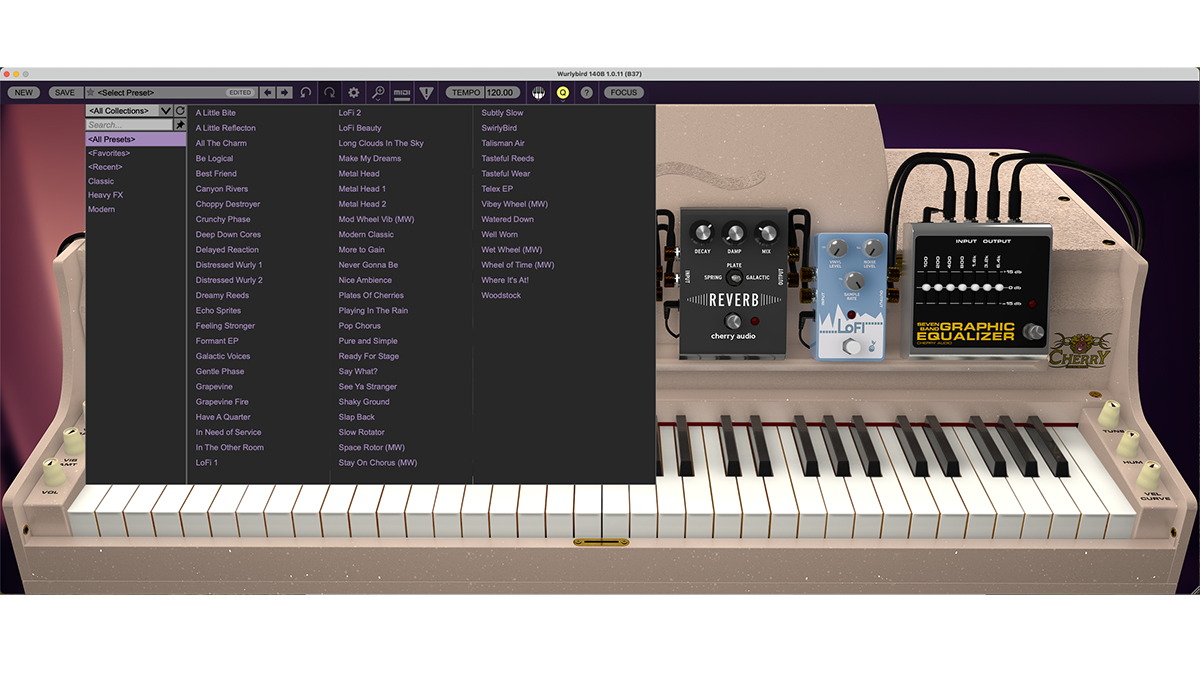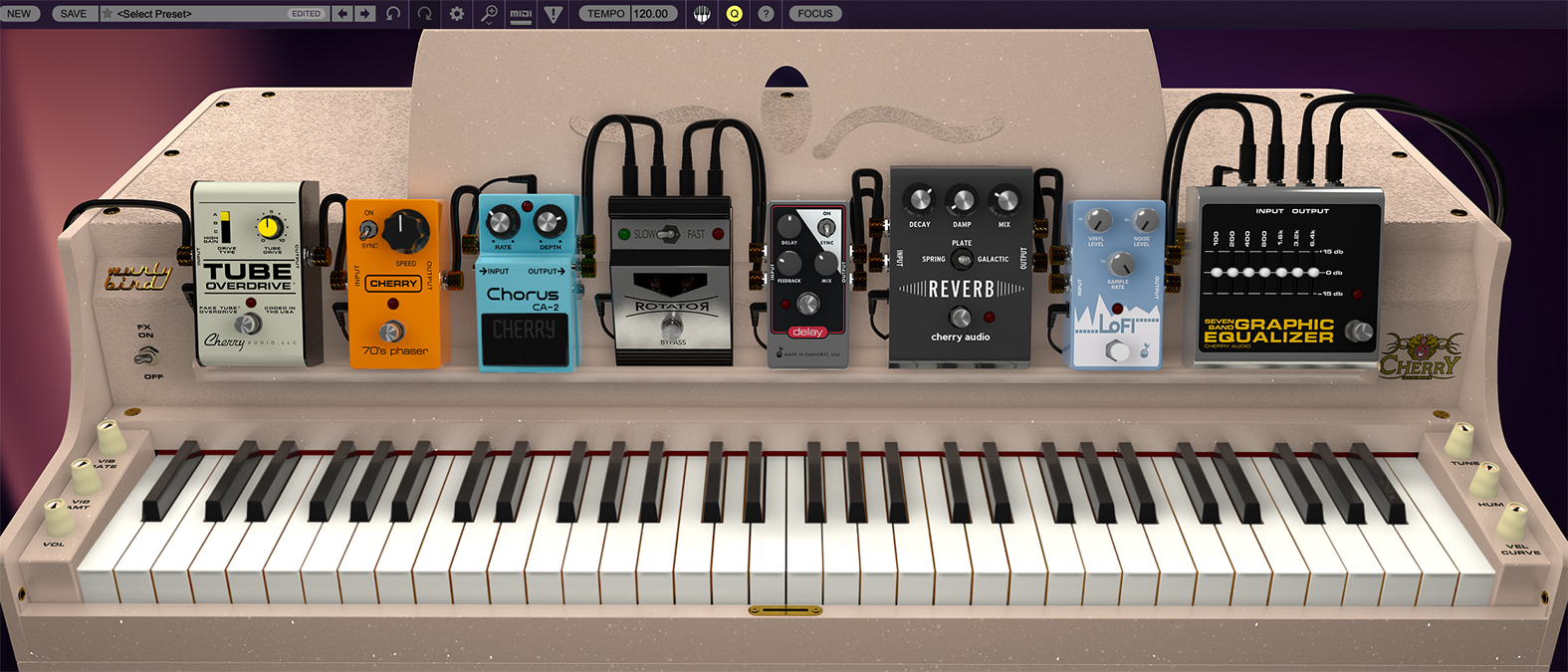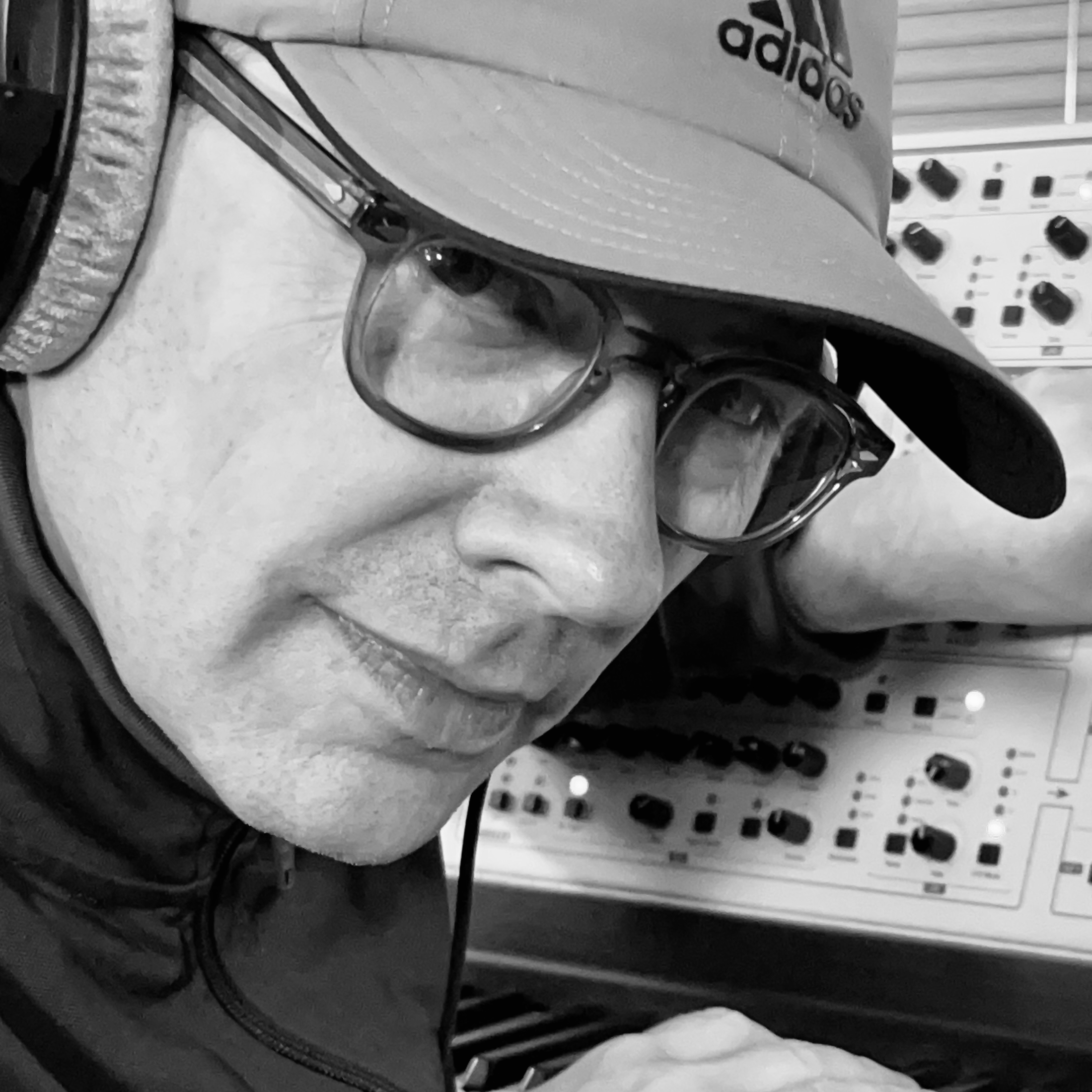MusicRadar Verdict
Cherry Audio’s first foray into sampled territory is an undoubted success, which bodes well for future releases. It’s a classic Wurly, with reed-shaped metaphorical bells on!
Pros
- +
Beautifully characterful recreation of the Wurlitzer 140B.
- +
Deeply sampled with plenty of glorious overtones.
- +
The vibrato is right where you need it, on the front panel.
- +
The stomp-box FX are plentiful and incredibly good.
- +
We love the noise pot!
Cons
- -
Sample range does not extend beyond the keyboard limit.
- -
It’s not a Rhodes? (But they are often confused!)
MusicRadar's got your back
Cherry Audio Wurlybird 140B: What is it?
Say electric piano to any professional keyboard player, and they probably won’t conjure an image of something akin to a domestic piano, with faux-wooden casing. You would be far more likely to hear mention of two mainstay classics: the Rhodes and the Wurlitzer.
The Wurlitzer, or Wurly to its friends, is the latest instrument to be reproduced in software by Cherry Audio. To say that Cherry has been on a roll recently is possibly the biggest understatement of the century. Every plugin we have seen from the brand, encompasses a wonderful blend of sonic accuracy and all-important user functionality.
The new Wurlybird 140B is based around an original reconditioned instrument. Back in the ’60s, a couple of Wurly iterations reigned supreme, with many believing that the 140B was the instrument of choice. Of course, there will be plenty of aficionados who may disagree, preferring the series 200 models, but it’s really just apples and oranges, with minor tonal differences informing personal preference.

Cherry Audio Wurlybird 140B: Performance and verdict
Wurlys occupy a category of piano known as electro-mechanical; this means that there is a real piano mechanism, where a hammer strikes a noise-emitting component known as a reed, much like a string on a conventional acoustic piano. The tone of the reed is then amplified, which explains why you can hear the vague muffled sound of a Wurlitzer when you play one, but it's only once you switch it on that you hear it with any degree of authority.
This also explains why this plugin breaks with Cherry Audio tradition, being its first plugin which is sample-based, rather than modelled. Despite going to great lengths to capture a very large number of articulations and dynamics, the sample storage count remains relatively low, at a mere 380Mb. This may also be in part due to the reduced range of the instrument, at a little over five octaves.

• Arturia Wurli V
Another sampled iteration of Wurlitzer, but this time captured from a model 200. Wurli V packs a beefy 3Gb of sampled content.
• Spectrasonics Keyscape
If you prefer the more completist approach, Keyscape contains both models 140 and 200, alongside a vast array of other tempting pianistic classics.
We started using Wurlybird in a default state, so that we could really hear the initial sampled content unaffected. When played softly, it sounds subtle and magical, and as you start to exaggerate through the odd accented note, the classic EP distortion begins to show its gritted teeth, engaging you as a player.
As you play harder, particularly in the lower register, the unique descending saturation-sweep is very much in evidence. We were auditioning the Wurlybird with a fully-weighted controller keyboard, and in this setting it’s a very playable affair, although we did find that we wanted to experiment with the velocity scaling during this process. Cherry has placed a useful Velocity Curve control, on the far right of the keyboard section, allowing immediate velocity taming, should it be required. You may need to temper the upper velocity limits, especially if exploring via an unweighted controller keyboard.
Want all the hottest music and gear news, reviews, deals, features and more, direct to your inbox? Sign up here.
Access to the vibrato effect is immediate, via a rate and amount pot, located on the far left of the keyboard. You’ll also find a fantastic Hum volume control on the right, should you wish to bring back the noise!

Gonna get myself effected
If you flick the FX switch, located on the left-hand side, you will immediately reveal a lineup of eight FX stomp-boxes, all designed to bring classic character to the Wurly sound. The graphics look beautiful and if you have any knowledge of the stomp-boxes associated with pianos of this kind, you can quickly and easily put two and two together, associating the lineup with the classic effects of yesteryear.
The colour schemes employed within the graphics do give it away, but this is quite simply a masterstroke! Not only do they all sound superb in their own right, but as a sum of parts, it extends the usage of the Wurlybird to include nostalgia and contemporary sounds in equal measure.
There’s a sizeable collection of presets, if you need some inspiration, but we concluded that it’s far more fun to work through the effects and hear what they do, both individually and as a collective.
What we'd say
We shouldn't be surprised to learn that, despite Wurlybird 140B being a slightly different composition to other Cherry products, it remains of the calibre that you would expect. Most importantly, it feels incredibly authentic at the base-sample level, and all of the other components that add to the general sonic makeup endorse the foundations beautifully. As an instrument, it provides vast potential which extends way beyond its original use by rock bands, from its date of first production. It blends beautifully with other instruments in a mix, which might explain why it remains such a popular design within the current production realm.
MusicRadar verdict: Cherry Audio’s first foray into sampled territory is an undoubted success, which bodes well for future releases. It’s a classic Wurly, with reed-shaped metaphorical bells on!
Cherry Audio Wurlybird 140B: Hands-on demos
Cherry Audio
CatSynth TV
The Sound Test Room
Prod By ThatGuyFace
Cherry Audio Wurlybird 140B: Specifications
- macOS 10.13 or above. macOS 13 Ventura supported. 64-bit required. Native Apple M1 or greater processor support, including Ultra.
- Windows 7 or above (including Windows 11), 64-bit required.
- Formats: AU, VST, VST3, AAX and standalone.
- CONTACT: Cherry Audio
Roland Schmidt is a professional programmer, sound designer and producer, who has worked in collaboration with a number of successful production teams over the last 25 years. He can also be found delivering regular and key-note lectures on the use of hardware/software synthesisers and production, at various higher educational institutions throughout the UK





